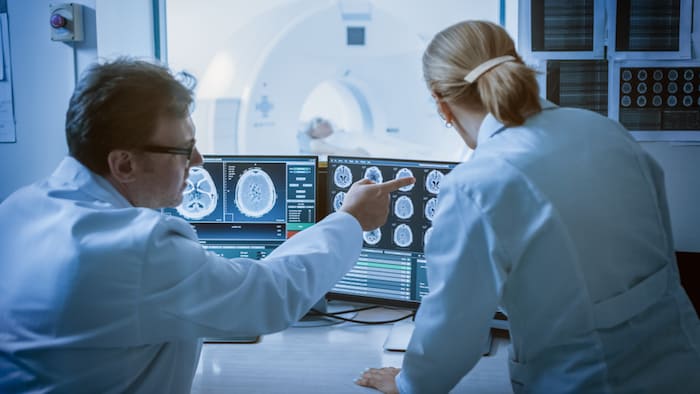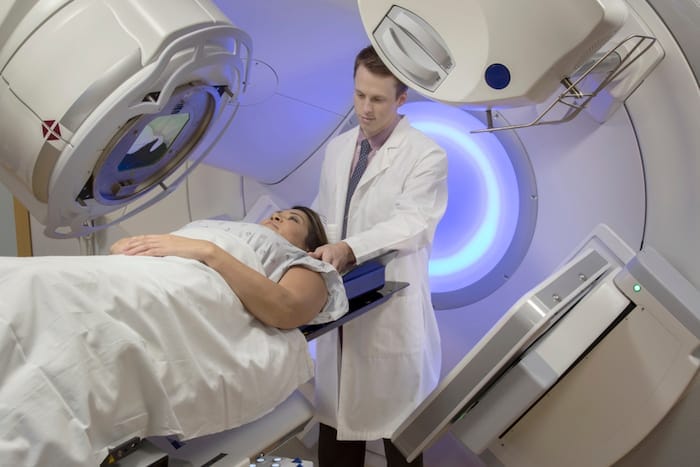
Cancer treatment using radiation has come a long way in recent years, with advances in medical technology making the process easier and shorter for patients. Conventional radiotherapy is one of the most commonly prescribed treatments for cancer and makes use of photons (x-rays) to treat cancerous cells anywhere in the body. It can be used as a standalone treatment or in combination with other treatments such as surgery, chemotherapy and immunotherapy.
Recent advances in technology have made proton beam therapy more readily available to patients across the world and while very similar to conventional radiotherapy, offers several benefits that would make this treatment for suitable for certain candidates.
Conventional Radiotherapy
The current diagnosis of cancer is approximately 1 in 2 for the developed world, which means a large number of cancer treatments need to be delivered every year. Conventional radiotherapy is used to treat approximately 25% of all cancer cases, whether the intention is curative (curing the patent of cancer) or providing palliative care (relieving the symptoms of cancer). Patients undergoing radiotherapy will have a unique treatment plan developed for them that takes into account the location, staging and severity of their cancer and may need to have a specialist radiotherapy mask made before undergoing treatments in certain areas of the body (such as the head and neck).
Radiotherapy is delivered in one of three ways, using a specialist machine, known as external radiotherapy. Using temporary radioactive implants located near the cancer, known as brachytherapy and radioisotope therapy, that sees patients ingest radioactive liquids or have a specialist radioactive solution injected into them.

Patients being treated with radiotherapy usually experience common side effects such as fatigue, nausea and may experience skin sensitivity and loss of hair in the area treated. These side effects will vary patient to patient but the care team will advise methods of managing these side effects. Long-term side effects will depend on the area being treated and are more commonly experienced in children who undergo radiation therapy on areas with developing tissues.
As the depth of the beam cannot be controlled completely, some surrounding healthy cells will receive a dose of radiation which can make the side effects feel more severe. These healthy cells are able to recover quite quickly and will often return to normal a few weeks after treatment has been completed.
Proton Beam Therapy
Proton beam therapy is delivered in a similar method to external radiotherapy and uses a specialist type of machine to beam high energy proton particles into the tumour or cancer cells. These high energy protons interrupt the process of these cells, preventing growth and duplication and eventually leading to the death of the cells.
As a type of targeted therapy, proton beam therapy offers several benefits over external radiotherapy. Using protons accelerated in a specialist machine known as a cyclotron, radiologist teams are better able to control the depth of the high energy particles travel to. This restricts the number of healthy cells that receive a dose of radiation and reduces the severity of side effects experienced.
Using pencil beam scanning technology makes proton beam therapy a much more accurate treatment than conventional radiotherapy and as a result, patients can also receive higher strength doses of radiation during proton beam therapy, reducing the individual session times and the length of the entire treatment plan.
This reduced treatment time not only benefits the patient, who is able to return to their normal day-to-day life relatively quickly but allows for a greater number of patients to receive treatment each year and reduces the strain on public health services and consultants.
Proton beam therapy will continue to grow in popularity as the technology becomes more cost-effective for hospitals and centres. While the cure rate of proton beam therapy has been measured as the same as conventional radiotherapy, it does offer a better treatment process with less severe side effects for patients and can reduce the strain cancer centres currently face from the high amount of cancer diagnosis.





